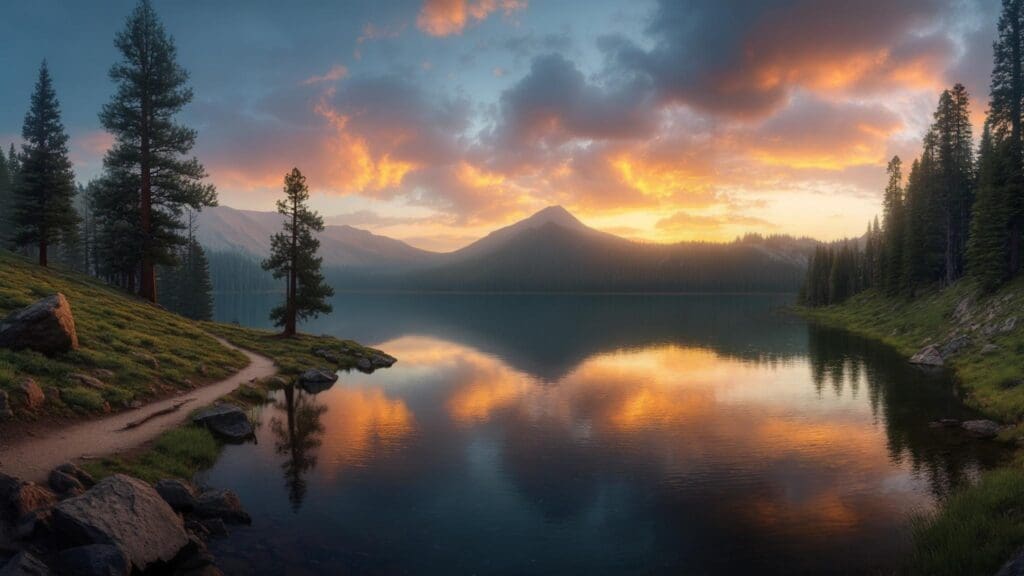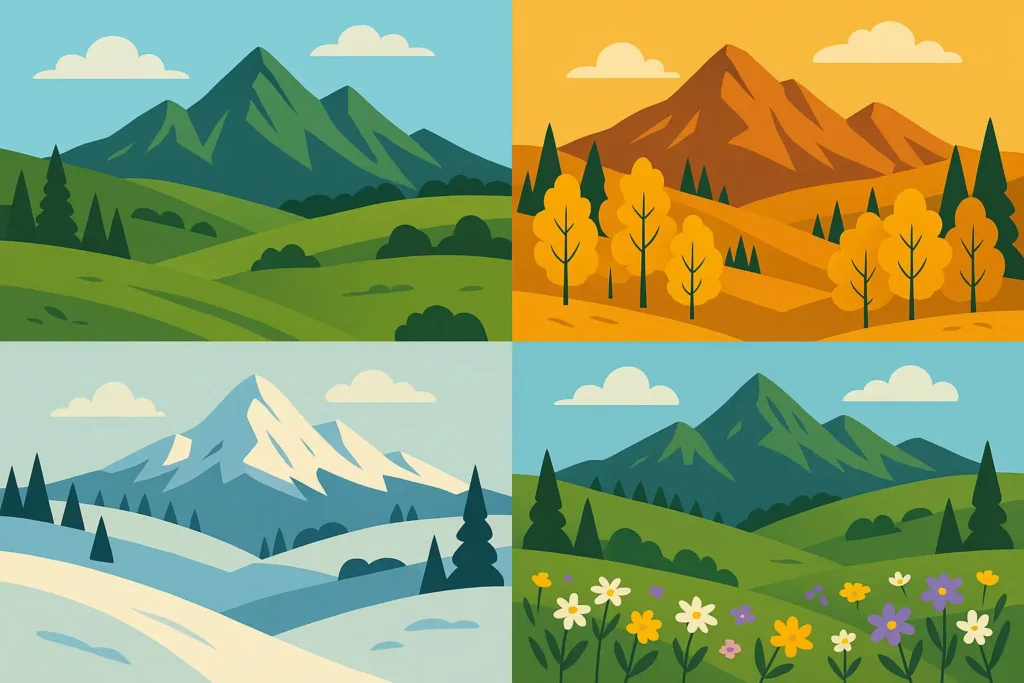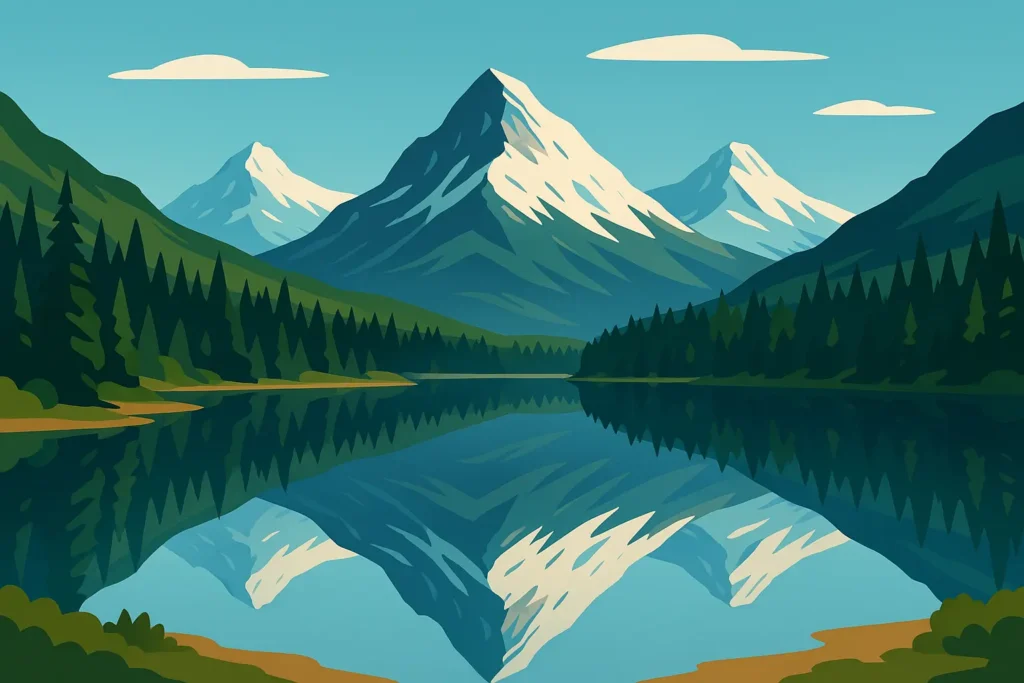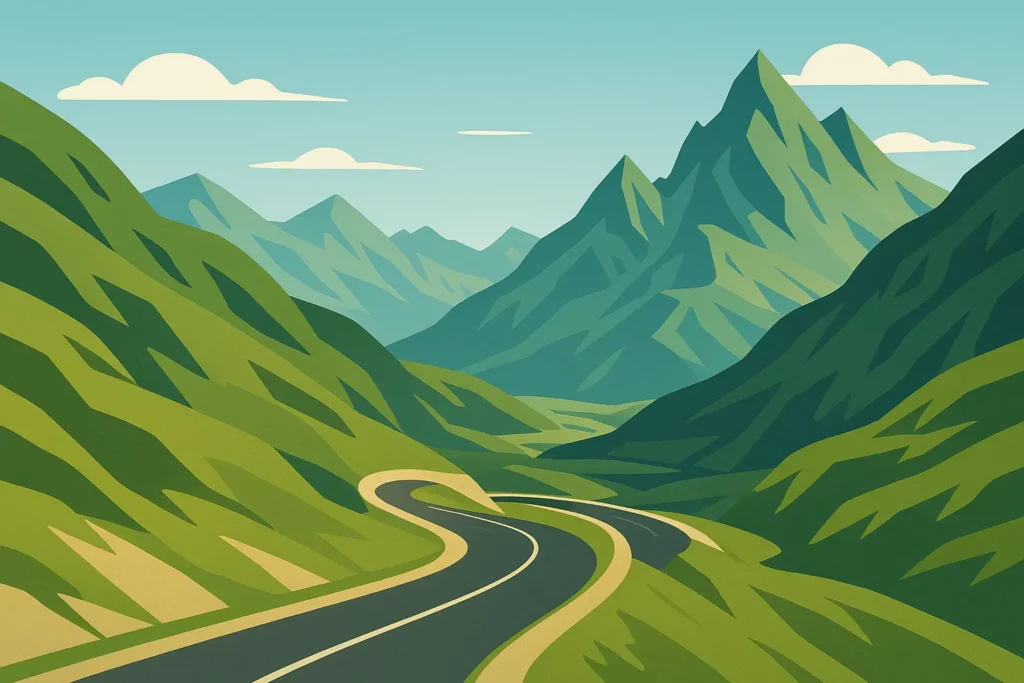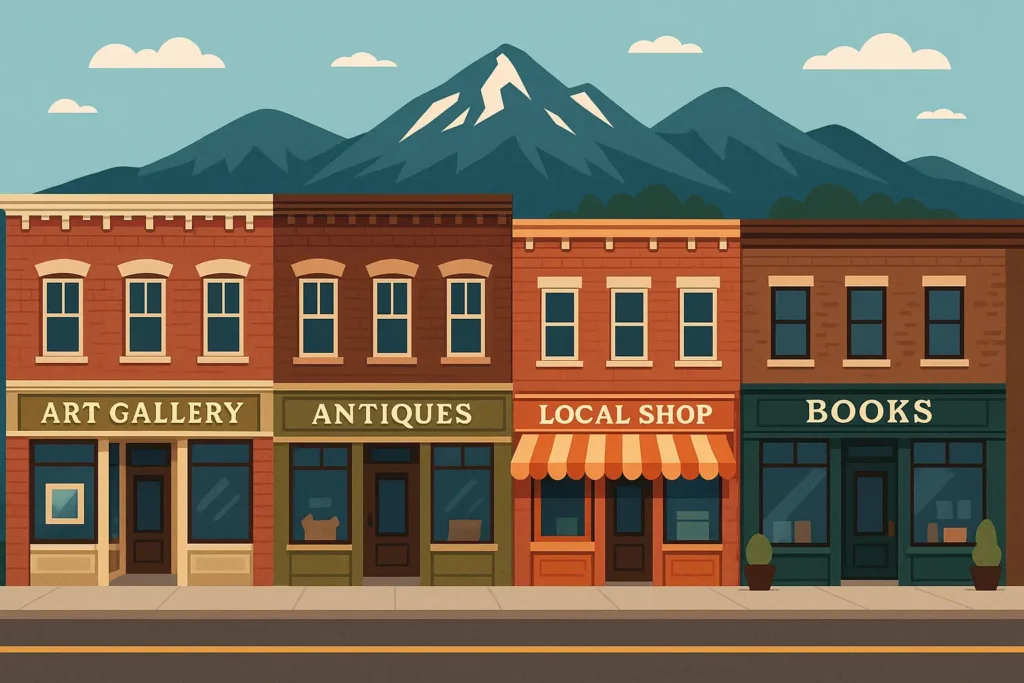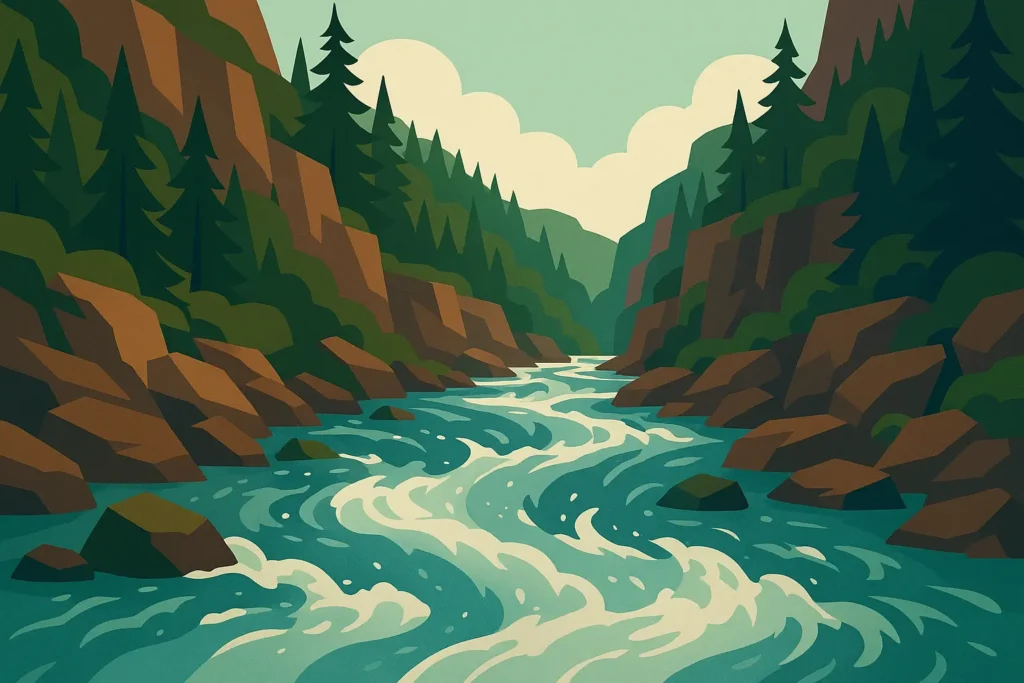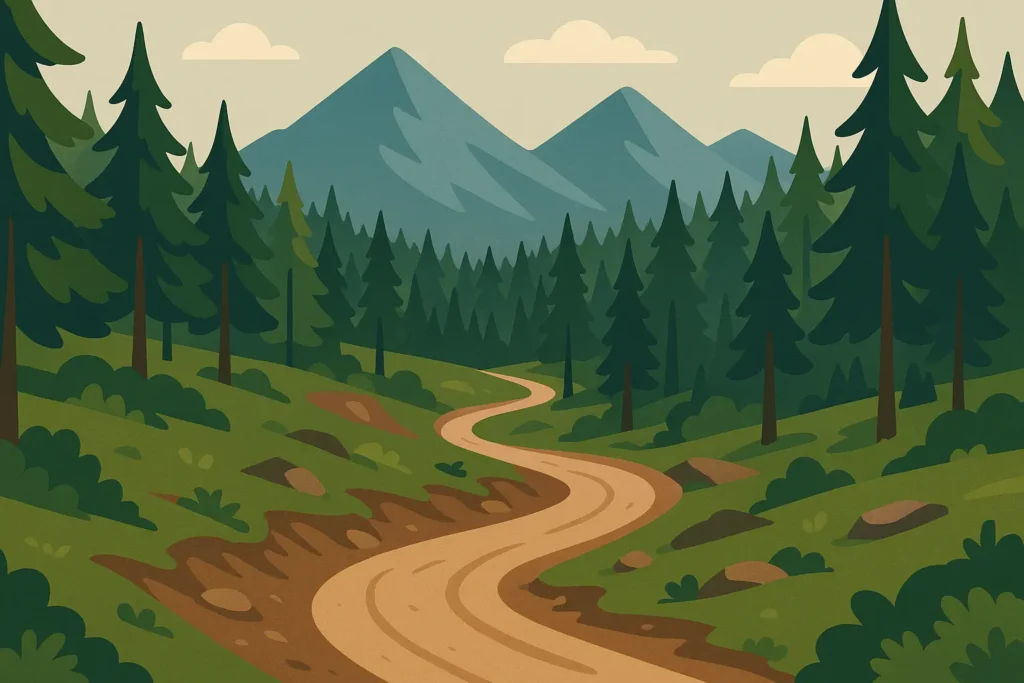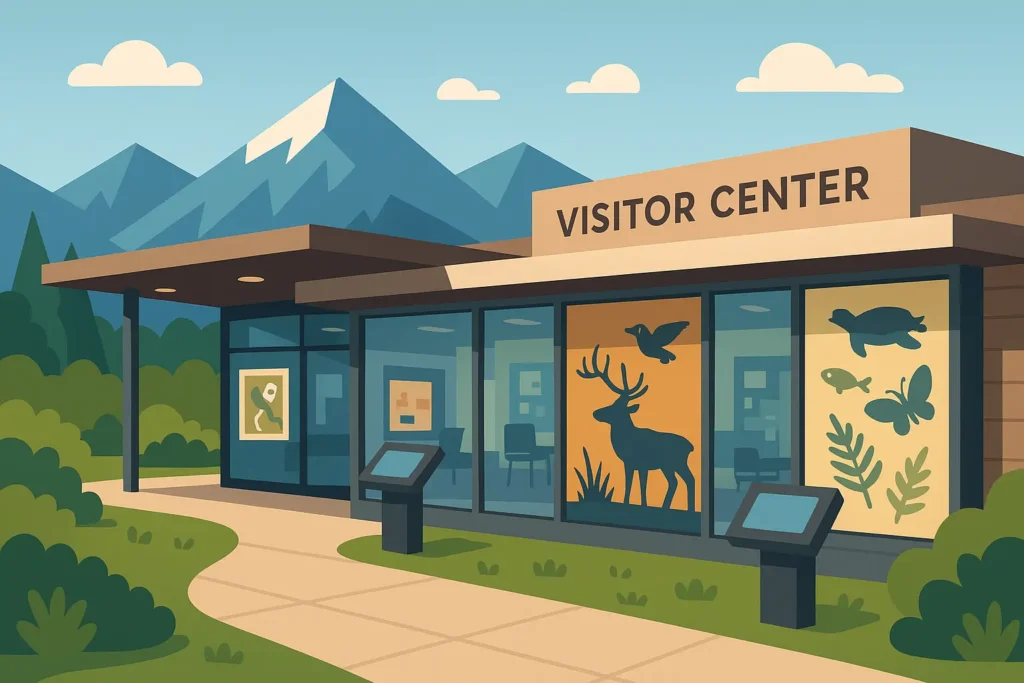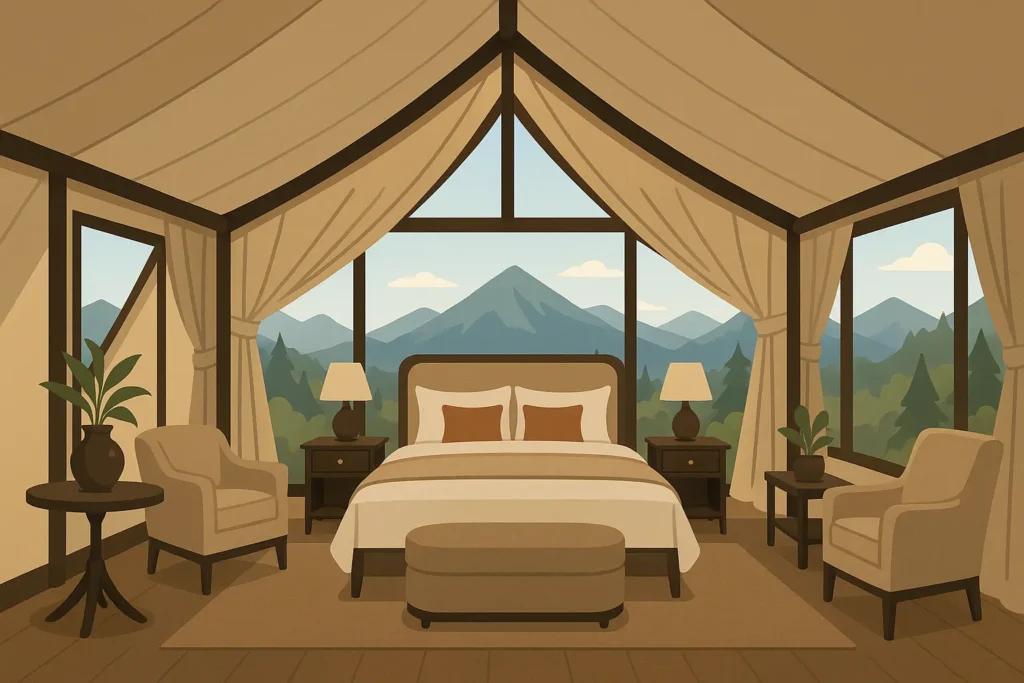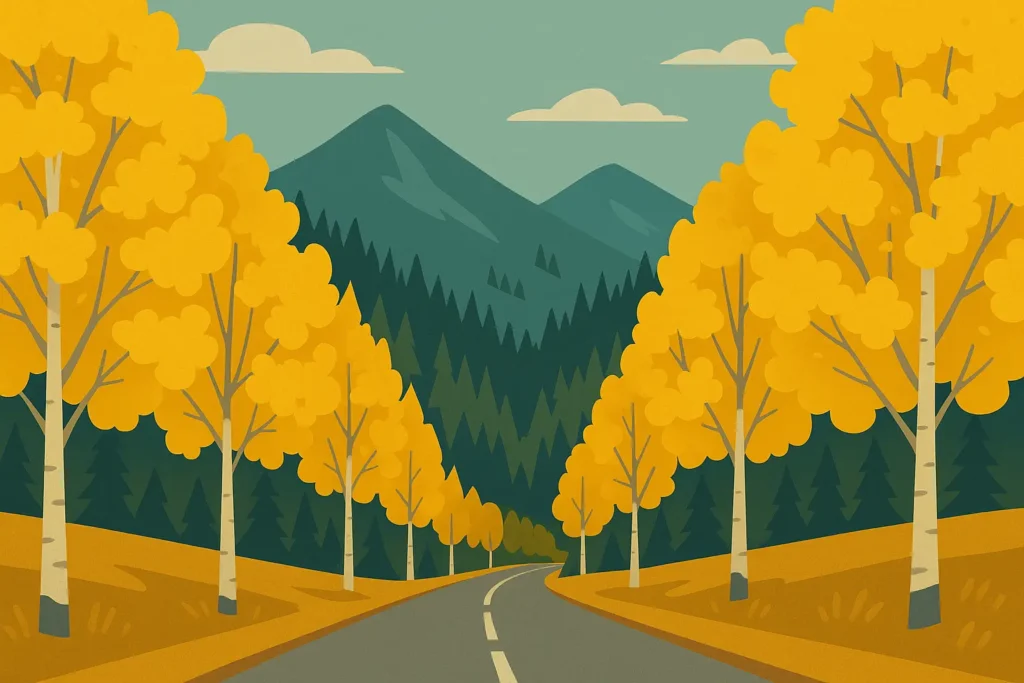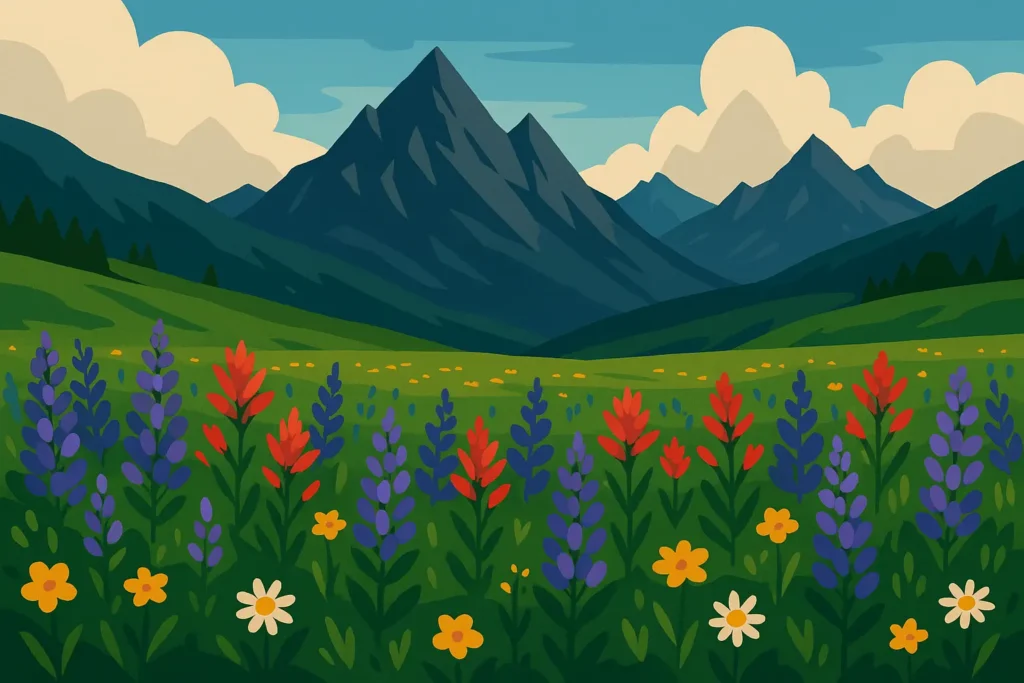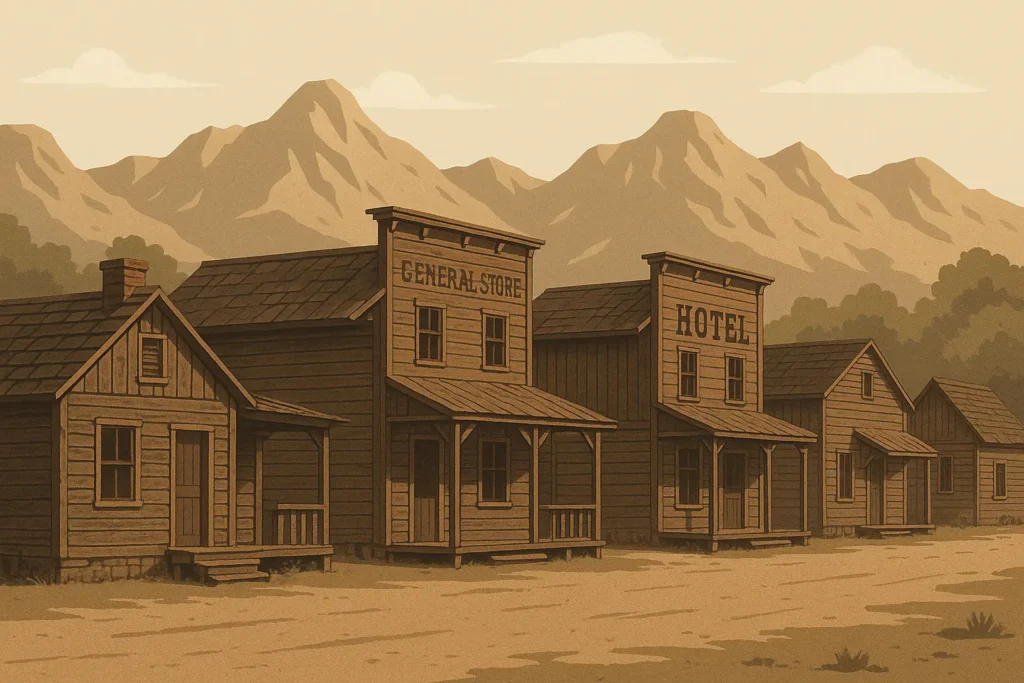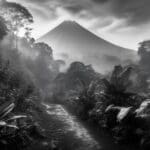I’ll be honest – I spent way too many hours staring at a map of Montana the first time I planned a trip there, completely overwhelmed by its massive size. We’re talking 147,000 square miles of everything from glacier-carved peaks to rolling prairie grasslands. And here’s the kicker – Montana attracts over 13 million visitors annually, making it one of America’s fastest-growing travel destinations. Translation? Everyone and their cousin is planning a Montana trip right now.
Look, planning a Montana adventure can feel impossible when you’re trying to balance national parks, historic towns, outdoor adventures, and seasonal limitations that change faster than your mood after three cups of coffee.
Quick Resources
-
Create your perfect trip with our Vacation Planner
-
Discover more tools at our main wedding tools hub
This guide breaks down 25 carefully crafted Montana itinerary options across six categories, helping you navigate Montana’s complexity with confidence and create an unforgettable experience that actually matches your interests, budget, and travel style (instead of that Pinterest-perfect disaster you originally had in mind).
Start planning with our free Vacation Planner tool
Essential Planning Considerations for Montana Adventures
Alright, let’s get real about what makes or breaks a Montana trip. I’ve seen too many people show up unprepared and spend half their vacation stressed about logistics instead of enjoying those incredible mountain views.
Successfully planning a Montana adventure comes down to six critical factors. Seasonal timing affects literally everything – from whether roads are even open to how much you’ll pay for a decent hotel room. Montana’s massive size means you’ll be doing some serious driving, and your group’s activity preferences and fitness levels will determine whether you’re having the time of your life or questioning every decision that led you here.
Use our Vacation Planner to match your trip with your group’s needs
Budget planning gets tricky because costs vary wildly – we’re talking budget motels to luxury lodges that cost more than your mortgage. Group dynamics matter more than you think (trust me on this), and advance planning becomes essential for anything remotely popular.
Seasonal Timing and Weather Patterns
Here’s the deal with Montana weather – it’s moody as hell. I’ve seen it snow in July at Glacier (seriously), and I’ve worn shorts in February in Billings.
Summer months (June-August) give you the most reliable weather for outdoor activities, with temps ranging from 70-85°F and full access to mountain roads. But you’ll pay premium prices and deal with crowds that make Logan Pass feel like Disneyland with mountains.
Spring (April-May) and fall (September-October) are where the magic happens – fewer tourists, lower costs, and absolutely stunning seasonal beauty. Spring brings wildflower blooms and rushing waterfalls, while fall delivers spectacular foliage that’ll make your Instagram followers jealous. The catch? Weather becomes unpredictable, and mountain roads can close without warning.
Winter (November-March) transforms Montana into a snow-covered wonderland that’s perfect for skiing and winter wildlife viewing. Temps can drop below -20°F, and many mountain passes close completely. If you’re planning winter activities, embrace the season fully – don’t expect to combine skiing with summer hiking trails.
| Season | Temperature Range | Pros | Cons | Best Activities |
|---|---|---|---|---|
| Summer (Jun-Aug) | 70-85°F | Full road access, reliable weather | Peak prices, crowds | Hiking, camping, scenic drives |
| Fall (Sep-Oct) | 45-70°F | Lower costs, fall colors, fewer crowds | Unpredictable weather | Photography, wildlife viewing |
| Winter (Nov-Mar) | -20-40°F | Snow sports, winter wildlife | Road closures, extreme cold | Skiing, snowshoeing, hot springs |
| Spring (Apr-May) | 40-65°F | Wildflowers, waterfalls | Muddy trails, variable conditions | Moderate hiking, photography |
Geographic Scope and Transportation
Montana ranks as America’s fourth-largest state, and those 147,000 square miles will humble you real quick. The drive from Glacier National Park to Yellowstone? Over 350 miles of beautiful but remote terrain that’ll eat up your entire day.
Rental cars aren’t optional here – they’re absolutely essential. Public transportation barely exists outside Bozeman, Missoula, and Billings. Always check road conditions before heading out, especially for mountain passes that can close due to weather, construction, or just because Mother Nature felt like it.
Here’s a reality check from my friends Sarah and Mike’s Montana honeymoon disaster: They initially planned to visit Glacier, Yellowstone, Big Sky, and Bozeman in one trip. What they got instead was 20+ hours of driving, gas station snacks, and Mike’s passive-aggressive commentary about Sarah’s “unrealistic expectations.” By day three, they ditched half their itinerary and focused on Glacier National Park and the Flathead Valley. Best decision ever – they actually had time to hike, take boat tours, and enjoy romantic dinners in Whitefish instead of living in their rental car.
Avoid itinerary overload — let our Vacation Planner help
Activity Preferences and Fitness Level
Montana accommodates every fitness level, but let’s be honest about what you can actually handle. Glacier National Park offers everything from wheelchair-accessible boardwalks to grueling 15-mile backcountry adventures that’ll leave you questioning your life choices.
If you’re coming from sea level, even moderate hikes at 6,000+ feet can kick your butt. Plan easier activities for your first few days, then gradually increase intensity as your body adapts (and stops reminding you that you should’ve hit the gym more).
Budget Considerations
Montana’s accommodation costs are all over the map. Glacier National Park lodges command $300+ per night during peak summer, while small-town motels might charge $80-120. That $80 motel might sound sketchy, but sometimes it’s cleaner than the $200 “rustic lodge” that hasn’t updated anything since 1987.
Food costs vary dramatically too. Tourist areas near national parks charge premium prices for mediocre food, while local cafes in small towns serve hearty meals that won’t break the bank. Factor in equipment rental fees if you’re not bringing your own gear – those costs add up fast.
Group Dynamics and Interests
Your travel companions can make or break your Montana experience. Multi-generational families need different pacing than adventure-focused young adults. Some groups thrive on structured activities and guided tours, while others prefer spontaneous exploration.
Be honest about everyone’s interests. Culture enthusiasts might love Bozeman’s art galleries, while outdoor adventurers prefer backcountry hiking. The best Montana itinerary balances different preferences instead of forcing everyone into identical activities (and creating that one family member who complains the entire time).
Advance Planning Requirements
Popular Montana experiences require serious advance planning. National park lodges, especially in Glacier, book solid for peak season up to 13 months ahead. Start planning now, seriously.
Guided activities like whitewater rafting, horseback riding, and fishing expeditions fill up months in advance. Restaurant reservations in tourist areas become essential during peak season. Purchase annual national park passes if you’re visiting multiple parks – they pay for themselves quickly.
Organize your entire trip with our Vacation Planner
Classic National Parks & Natural Wonders
Montana’s natural wonders showcase some of America’s most spectacular landscapes, and these five itineraries focus on the state’s most iconic attractions. Each Montana itinerary provides detailed day-by-day planning with specific recommendations and practical considerations for timing, budget, and logistics.
1. Glacier National Park Grand Tour (7-10 Days)
Start your comprehensive Glacier exploration in Kalispell, using it as your base for western park areas. Spend your first 2-3 days exploring Lake McDonald Lodge and Apgar Village, where you’ll find comfortable accommodations with easy park access.
The Going-to-the-Sun Road becomes your primary adventure corridor (weather permitting). This engineering marvel winds 50 miles through the park’s heart, offering countless stopping points for photography and short hikes. Logan Pass provides access to the Hidden Lake Overlook trail – a manageable 3-mile round trip that delivers spectacular alpine scenery (and probably some altitude adjustment reality checks).
Days 3-4, shift your base to the eastern side, staying in St. Mary or East Glacier. The Two Medicine area offers a completely different park experience, with boat tours to Upper Two Medicine Lake and hiking opportunities that feel more remote and peaceful than the busy western corridors.
This comprehensive Glacier experience spans 7-10 days and covers all major park areas from Lake McDonald to Many Glacier. The Montana itinerary balances iconic drives with diverse hiking opportunities, though you’ll need to book accommodations 12+ months in advance for peak season.
2. Yellowstone’s Montana Gateway (5-7 Days)
Base yourself in West Yellowstone, Montana, for easy access to Yellowstone’s northern sections while enjoying better accommodation options and often better prices than staying inside the park.
Focus your park exploration on Mammoth Hot Springs’ terraced limestone formations and Norris Geyser Basin’s dynamic thermal features. The Lamar Valley, often called “America’s Serengeti,” offers exceptional wildlife viewing, especially during early morning and evening hours when animals are most active.
This Montana itinerary uses West Yellowstone as a strategic base for exploring Yellowstone’s northern sections while incorporating Montana-specific attractions like Big Sky Resort and the Gallatin Valley. The approach balances world-famous park attractions with Montana’s unique mountain culture.
3. Beartooth Highway Adventure (4-5 Days)
The Beartooth Highway (US-212) ranks among America’s most spectacular mountain drives, connecting Red Lodge, Montana to Yellowstone’s northeast entrance. This high-altitude route reaches 10,947 feet at Beartooth Pass, offering views that stretch across multiple states.
Plan overnight stays in both Red Lodge and Cooke City to fully experience this alpine adventure. Red Lodge provides excellent dining and accommodation options, while Cooke City offers authentic frontier atmosphere with basic but comfortable lodging.
This scenic driving adventure focuses on the legendary Beartooth Highway, combining spectacular high-altitude mountain scenery with charming small-town experiences. The Montana itinerary includes opportunities for high-alpine lake fishing, hiking at extreme elevations, and photography of some of the most dramatic landscapes in the American West.
4. Bob Marshall Wilderness Experience (6-8 Days)
This backcountry adventure requires partnering with licensed outfitters who provide horses, guides, and wilderness expertise. Access points include Choteau or Seeley Lake, depending on your chosen route into this 1.5-million-acre wilderness complex.
The experience centers around horseback travel through pristine wilderness where motorized vehicles are prohibited. You’ll stay at backcountry camps or rustic guest ranches, experiencing Montana’s wilderness much as early explorers did.
The Chinese Wall – a 1,000-foot limestone escarpment – provides one of the wilderness area’s most dramatic backdrops. Guided fishing in remote streams and wildlife observation opportunities make this experience unforgettable for those seeking authentic wilderness adventure.
5. Little Bighorn & Eastern Montana History Tour (3-4 Days)
Eastern Montana’s vast prairies and historic sites tell the story of the American West’s most dramatic conflicts. The Little Bighorn Battlefield National Monument serves as the centerpiece, where Custer’s Last Stand unfolded in 1876.
Pompeys Pillar offers another significant historical site where William Clark carved his name during the Lewis and Clark expedition. Historic towns like Miles City and Glendive preserve authentic Western atmosphere with period architecture and local museums.
This historical Montana itinerary explores pivotal moments in American West history, combining significant historical monuments with authentic small-town Western experiences and opportunities to learn about Native American perspectives on these events.
Urban & Cultural Experiences
Montana’s cities offer rich cultural experiences that complement the state’s natural attractions. These four urban itineraries showcase Montana’s sophisticated side, featuring world-class museums, thriving food scenes, and cultural attractions.
6. Bozeman & Gallatin Valley Cultural Circuit (4-5 Days)
Bozeman combines university town sophistication with authentic Western culture, creating Montana’s most vibrant urban experience. Downtown’s historic Main Street features locally-owned boutiques, art galleries, and restaurants that showcase regional ingredients.
The Museum of the Rockies houses one of the world’s premier dinosaur collections, including specimens discovered in Montana’s fossil-rich formations. The planetarium offers evening programs that take advantage of Montana’s exceptional dark skies.
This cultural Montana itinerary combines world-class museums, vibrant arts scenes, and farm-to-table dining experiences with easy access to nearby historical sites and scenic drives. The experience balances indoor cultural attractions with outdoor opportunities, making it suitable for year-round visits.
7. Missoula Arts & Literature Trail (3-4 Days)
Missoula’s reputation as a literary hub stems from the University of Montana’s renowned creative writing program and the city’s embrace of independent bookstores, literary events, and artistic expression. The historic Wilma Theatre anchors downtown’s entertainment district.
Independent bookstores like Fact & Fiction create gathering spaces for literary discussions and author events. The Montana Museum of Art & Culture showcases regional and contemporary works that reflect the state’s artistic evolution.
8. Great Falls & Central Montana Heritage (3-4 Days)
Great Falls
Great Falls serves as the gateway to central Montana’s rich cultural heritage, anchored by the C.M. Russell Museum’s extensive collection of Western art. The Lewis & Clark National Historic Trail Interpretive Center provides comprehensive context for the famous expedition’s Montana experiences.
9. Billings & Rimrock Country (2-3 Days)
Montana’s largest city offers urban amenities while maintaining connection to its Western heritage. The Yellowstone Art Museum features regional works, while the Rimrocks – sandstone cliffs overlooking the city – offer panoramic views and hiking opportunities within the urban area.
Adventure & Outdoor Sports
Montana’s diverse landscapes create world-class opportunities for outdoor adventure. These five adventure-focused itineraries cater to thrill-seekers and outdoor enthusiasts, offering experiences from guided whitewater expeditions to world-class fly fishing.
10. Whitewater Rafting & River Adventures (4-6 Days)
Montana’s pristine rivers offer some of America’s best whitewater experiences, from gentle scenic floats to heart-pounding Class IV rapids. The Middle Fork of the Flathead River provides the perfect introduction, with Class III-IV rapids flowing through designated wilderness areas.
Base your adventure near West Glacier for easy access to multiple river systems. Professional guides provide all necessary equipment and safety instruction, making these experiences accessible to beginners while challenging enough for experienced rafters.
Multi-day expeditions include riverside camping, gourmet outdoor meals, and opportunities to spot wildlife like bears, eagles, and mountain goats. Evening campfires and stargazing create memorable moments between days of river adventure.
11. Ski Resort Winter Wonderland (5-7 Days)
Montana’s ski resorts offer diverse experiences from Big Sky’s expansive terrain to Whitefish Mountain Resort’s family-friendly atmosphere. Big Sky boasts over 5,800 acres of skiable terrain with minimal crowds compared to Colorado or Utah destinations.
| Resort | Skiable Acres | Vertical Drop | Best For | Approximate Daily Cost |
|---|---|---|---|---|
| Big Sky | 5,800 | 4,350 ft | Advanced skiers, powder | $150-200 |
| Whitefish Mountain | 3,000 | 2,353 ft | Families, beginners | $80-120 |
| Bridger Bowl | 2,000 | 2,600 ft | Locals experience, steep terrain | $60-80 |
| Red Lodge Mountain | 1,600 |
12. Fly Fishing Paradise Tour (5-8 Days)
Montana’s legendary trout streams attract anglers from around the world, and this comprehensive fishing adventure covers the state’s most productive waters. Begin on the Gallatin River near Bozeman, where rainbow and brown trout thrive in diverse water conditions perfect for learning proper techniques.
My buddy Tom, a complete fly fishing novice from Chicago, booked a 5-day guided fishing tour covering the Madison, Gallatin, and Yellowstone rivers. His guide started him on the gentler Gallatin with basic casting instruction, then progressed to the technical spring creeks where he learned to read water and match hatches. By day four on the Yellowstone, Tom was successfully landing 18-inch brown trout and had developed enough confidence to book return trips. The progression from beginner-friendly waters to challenging technical fishing created a perfect learning curve.
The Madison River’s “50-mile riffle” section consistently ranks among America’s top trout streams. Professional guides provide instruction on reading water, fly selection, and casting techniques while you pursue trophy-sized fish in pristine mountain settings.
The Yellowstone River near Livingston offers blue-ribbon fishing from drift boats, allowing you to cover more water while guides handle navigation. Spring creeks like Armstrong’s and Nelson’s provide technical fishing challenges in crystal-clear waters where large trout demand precise presentations.
13. Rock Climbing & Mountaineering (4-6 Days)
Montana’s diverse rock formations create climbing opportunities for every skill level, from beginner-friendly sport routes to challenging traditional climbs. Hyalite Canyon near Bozeman offers year-round climbing with summer rock routes and world-class ice climbing during winter months.
The Pryor Mountains near Billings feature unique limestone formations with excellent sport climbing routes. Glacier National Park provides alpine climbing opportunities for experienced mountaineers, though technical skills and wilderness experience are essential.
14. Mountain Biking Trail Network (4-5 Days)
Montana’s extensive trail systems cater to mountain bikers seeking everything from gentle rail-trails to technical singletrack adventures. Whitefish’s trail network offers over 30 miles of purpose-built mountain bike trails with options for cross-country riding and downhill bike park experiences.
Big Sky Resort transforms into a mountain biking destination during summer months, with chairlift-accessed downhill trails and scenic cross-country routes. The resort’s bike park features progressive terrain suitable for skill development.
The Route of the Hiawatha provides a unique rail-trail experience, following a former railroad grade through tunnels and over trestles with spectacular mountain and valley views.
Family-Friendly Adventures
Montana offers exceptional family vacation opportunities that balance outdoor adventure with educational experiences. These four family-focused itineraries consider different age groups, attention spans, and activity levels while ensuring parents and children create lasting memories together.
15. Glacier National Park Family Explorer (5-7 Days)
This family-focused Glacier adventure balances spectacular scenery with manageable activities for children ages 6-16. Stay at family-friendly accommodations like Apgar Village Lodge, which offers kitchen facilities for preparing familiar meals and snacks.
Begin with accessible experiences like the Trail of the Cedars boardwalk (0.8 miles) and the Avalanche Lake hike (4.5 miles round trip). These trails provide stunning scenery without overwhelming younger hikers or requiring advanced fitness levels.
The historic Red Bus tours offer comfortable sightseeing along Going-to-the-Sun Road, allowing families to enjoy mountain scenery while guides share park history and wildlife information. Children earn Junior Ranger badges through park programs designed to engage young visitors with hands-on activities.
16. Yellowstone & West Montana Family Fun (6-8 Days)
Combine West Yellowstone’s family attractions with Montana’s outdoor recreation opportunities for a diverse adventure that keeps children engaged. The Grizzly & Wolf Discovery Center provides up-close wildlife viewing in a safe, educational environment.
Local ranches offer horseback riding lessons tailored to different ages and experience levels. Earthquake Lake tells the dramatic story of the 1959 earthquake that created this natural landmark, combining geology education with scenic beauty.
17. Dude Ranch Experience (5-7 Days)
Authentic dude ranches provide immersive Western experiences where families participate in daily ranch operations while enjoying comfortable accommodations and guided activities. Working cattle ranches like Triple Creek Ranch or Lone Mountain Ranch offer programs designed for different age groups.
Children learn horsemanship skills through age-appropriate lessons while adults can choose more advanced riding experiences. Cattle drives, fishing instruction, and evening campfire programs create authentic Western memories.
18. Educational Wildlife Safari (4-5 Days)
Montana’s wildlife viewing opportunities create natural classroom experiences for families interested in conservation and animal behavior. The National Bison Range provides guaranteed wildlife viewing with educational programs about prairie ecosystem restoration.
The Johnson family from Denver spent four days on Montana’s educational wildlife safari with their three children (ages 8, 12, and 15). They started at the National Bison Range where ranger programs taught them about prairie restoration. At the Lee Metcalf Wildlife Refuge, they spotted over 40 bird species and learned about wetland conservation. The kids kept nature journals, participated in citizen science projects, and earned certificates from each location. The experience sparked their 12-year-old’s interest in biology, leading to a career path she’s still pursuing in college.
The Lee Metcalf National Wildlife Refuge offers diverse habitats and seasonal wildlife viewing opportunities. Guided tours help families identify species and understand conservation efforts while exploring accessible trails and observation areas.
Romantic & Luxury Escapes
Montana’s luxury travel scene offers sophisticated experiences that combine world-class accommodations with exclusive access to spectacular landscapes. These three romantic and luxury itineraries cater to couples seeking premium experiences.
19. Luxury Resort & Spa Retreat (4-6 Days)
Montana’s premier luxury accommodations redefine the Western experience through sophisticated amenities and exclusive access to pristine landscapes. The Resort at Paws Up near Missoula spans 37,000 acres and offers glamping in safari-style tents equipped with full bathrooms, king beds, and climate control.
Couples enjoy private spa treatments using locally-sourced ingredients, personalized horseback riding instruction, and gourmet dining featuring Montana beef and regional wines. Personal concierge services arrange activities based on your interests and fitness levels.
Triple Creek Ranch in the Bitterroot Valley consistently ranks among the world’s best small luxury hotels. Private cabin accommodations feature fireplaces, hot tubs, and panoramic mountain views. Helicopter tours over the Continental Divide and private chef dinners create once-in-a-lifetime experiences.
20. Wine Country & Culinary Tour (3-4 Days)
Montana’s emerging wine scene surprises visitors with high-quality vintages produced in the Flathead and Gallatin valleys. Glacier Sun Winery and Mission Mountain Winery offer tastings with spectacular mountain backdrops and opportunities to meet winemakers passionate about their craft.
| Winery | Location | Specialty | Tasting Fee | Notable Features |
|---|---|---|---|---|
| Glacier Sun Winery | Flathead Valley | Riesling, Pinot Grigio | $10-15 | Glacier views, organic practices |
| Mission Mountain Winery | Dayton | Pinot Noir, Chardonnay | $12-18 | Historic property, estate grown |
| Whitefish Mountain Winery | Whitefish | Fruit wines, Mead | $8-12 | Mountain setting, unique varietals |
| Tongue River Winery | Miles City | Traditional reds | $10-15 | Eastern Montana terroir |
Farm-to-table dining experiences showcase Montana’s agricultural bounty through restaurants that source ingredients from local ranches and farms. Cooking classes feature regional specialties and wine pairings that highlight Montana’s culinary evolution.
21. Historic Luxury Rail Journey (2-3 Days)
Experience Montana’s railroad heritage through luxury rail travel that combines historic routes with premium accommodations and first-class service. Historic rail cars feature period details and modern amenities, while observation cars provide panoramic views of Montana’s diverse landscapes.
Towns like Whitefish and Havre offer historic hotels that preserve railroad-era elegance with contemporary luxury amenities. Guided tours explore railroad heritage sites and the role of rail transportation in Montana’s development.
Seasonal & Special Interest
Montana’s seasonal variations create unique travel opportunities that showcase different aspects of the state’s natural beauty and cultural heritage. These four specialized itineraries focus on specific times of year or particular interests.
22. Fall Foliage & Harvest Festival Tour (4-5 Days)
Time this spectacular autumn adventure for late September to early October when Montana’s aspen groves transform into golden tunnels and harvest festivals celebrate the season’s bounty. The Bitterroot Valley provides the perfect base, with apple orchards and pumpkin patches creating quintessential fall scenes.
Local farmers markets showcase seasonal produce while scenic drives through Lolo Pass reveal aspen groves at peak color. The annual Apple Days festival in Hamilton features local crafts, live music, and harvest-themed activities that celebrate Montana’s agricultural heritage.
Glacier National Park’s lower elevations offer exceptional fall photography opportunities as larch trees (Montana’s only deciduous conifer) turn brilliant yellow. Wildlife viewing improves during autumn as animals prepare for winter, creating excellent opportunities for photography and observation.
Design your perfect fall or spring getaway with our Vacation Planner
23. Winter Wildlife & Northern Lights (4-6 Days)
Montana’s winter landscape creates unique wildlife viewing opportunities as animals adapt to harsh conditions and concentrate in accessible areas. The National Elk Refuge and Yellowstone’s northern range provide reliable wildlife viewing during winter months.
Northern lights photography becomes possible during Montana’s long winter nights, especially in areas with minimal light pollution. Cross-country skiing and snowshoeing provide quiet ways to explore winter landscapes while staying at cozy lodges with fireplaces and winter amenities.
24. Wildflower & Photography Workshop (5-7 Days)
Peak wildflower season (July-August) transforms Montana’s high-alpine meadows into colorful displays that attract photographers from around the world. Glacier National Park’s
Peak wildflower season (July-August) transforms Montana’s high-alpine meadows into colorful displays that attract photographers from around the world. Glacier National Park’s Logan Pass and the Beartooth Plateau offer exceptional wildflower viewing with dramatic mountain backdrops.
Professional photography instruction helps participants capture the perfect combination of wildflowers, mountain scenery, and optimal lighting conditions. Sunrise and sunset shoots take advantage of Montana’s spectacular mountain light.
25. Ghost Towns & Mining History (4-5 Days)
Montana’s rich mining heritage comes alive through well-preserved ghost towns and active historical sites that tell the story of the American West’s gold rush era. Butte serves as the starting point, with the World Museum of Mining and Berkeley Pit providing context for Montana’s mining legacy.
Bannack State Park preserves Montana’s first territorial capital with over 60 structures from the 1860s gold rush. Living history demonstrations during summer months help visitors understand daily life during the mining boom.
Virginia City and Nevada City offer restored buildings, museums, and the Virginia City Players theater troupe. The historic Alder Gulch Short Line Railroad connects these towns while providing scenic mountain views.
Garnet Ghost Town requires a scenic mountain drive but rewards visitors with well-preserved buildings and the opportunity to explore at their own pace. Philipsburg combines historical preservation with active businesses, including the Granite Mountain Sapphire Mine where visitors can search for gems.
How Montana Trip Planning Skills Transfer to Event Coordination
Here’s something nobody talks about – if you just read through this entire guide and found yourself mentally organizing your friends’ trips too, you might be naturally gifted at this stuff. The complex logistics, problem-solving abilities, and attention to detail required for successful Montana trip planning directly parallel the skills needed for professional event coordination.
Think about it – you’re managing diverse group preferences, coordinating multiple vendors and reservations, adapting to weather contingencies, and ensuring every participant has a memorable experience. Sound familiar? It’s exactly what wedding planners and event coordinators do every day.
When weather closes mountain passes or accommodations fall through, you need creative solutions fast while keeping everyone’s enthusiasm intact. These challenges mirror exactly what professional event coordinators face when managing weddings, corporate retreats, or family celebrations.
The ability to balance diverse interests within a group – ensuring the adventure enthusiast and the culture lover both have amazing experiences – demonstrates the same skills needed to coordinate events where different personalities and preferences must be accommodated seamlessly.
Jessica discovered her event planning talents while organizing her extended family’s Montana reunion. She coordinated accommodations for 25 people across three generations, planned activities ranging from gentle nature walks to whitewater rafting, and managed dietary restrictions for multiple restaurants. When a thunderstorm canceled their planned outdoor barbecue, she quickly arranged indoor alternatives and turned the crisis into a cozy evening of storytelling and games. Family members were so impressed with her grace under pressure and attention to everyone’s needs that three couples asked her to plan their weddings. This Montana experience launched her successful event planning business.
Look, if you’ve discovered you naturally take charge of trip planning, solve problems gracefully under pressure, and ensure everyone in your group creates lasting memories, you might have uncovered a hidden talent for event coordination. These skills could translate into a rewarding career helping couples create their perfect wedding day or assisting families in celebrating life’s most important moments.
Final Thoughts
Montana’s 25 diverse itineraries prove that this spectacular state offers experiences for every type of traveler, from luxury seekers to budget-conscious families, adventure enthusiasts to culture lovers. The key to Montana success lies in honest assessment of your group’s interests, realistic budget planning, and advance preparation for the logistics that make or break mountain state adventures.
Remember that Montana’s vast distances and seasonal variations require flexibility and backup plans. Weather can change mountain access in hours, but these challenges often lead to unexpected discoveries and memorable experiences you never planned. The state rewards travelers who embrace its wild character while respecting its natural power and seasonal rhythms.
Whether you choose a single focused Montana itinerary or combine elements from multiple categories, Montana will challenge your expectations and create memories that last lifetimes. The planning skills you develop organizing these complex adventures might just reveal hidden talents for event coordination that could transform into exciting career opportunities.
Bottom line: Montana’s going to test you – your patience, your budget, maybe your relationships. But if you plan smart, stay flexible, and remember that the best stories come from the stuff that goes wrong, you’ll have an amazing time. And hey, if trip planning turns out to be your secret superpower, maybe there’s a career in event planning waiting for you. Stranger things have happened.
Put your planning skills to the test with our Vacation Planner
1-800-BRIDESMAID
The Newlywed
Card Game
something extra to love
Read the weekly newsletter from Bridesmaid for Hire, 1-800-Bridesmaid, to hear about real stories, from strangers, who need advice on love, life, friendship, and so much more.
Looking for the perfect wedding gift for someone you adore? Grab The Newlywed Card Game. It's a fun and interactive game they can play on their honeymoon or future date nights.
